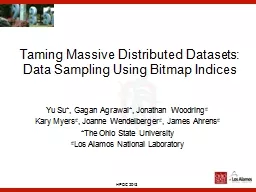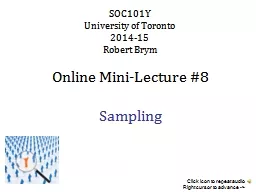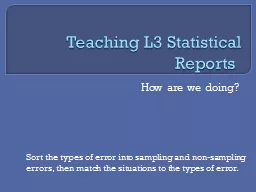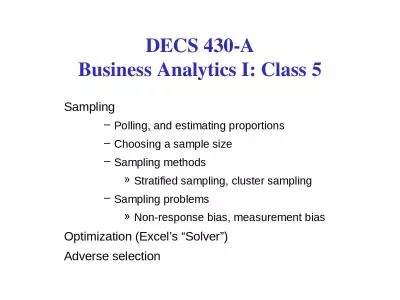PPT-Sampling Error
Author : stefany-barnette | Published Date : 2017-06-09
Dru Rose I wonder what percentage of all 600 Kare Kare College students travel to school by car Population 600 students S ample n 25 Dru Rose
Presentation Embed Code
Download Presentation
Download Presentation The PPT/PDF document "Sampling Error" is the property of its rightful owner. Permission is granted to download and print the materials on this website for personal, non-commercial use only, and to display it on your personal computer provided you do not modify the materials and that you retain all copyright notices contained in the materials. By downloading content from our website, you accept the terms of this agreement.
Sampling Error: Transcript
Download Rules Of Document
"Sampling Error"The content belongs to its owner. You may download and print it for personal use, without modification, and keep all copyright notices. By downloading, you agree to these terms.
Related Documents














